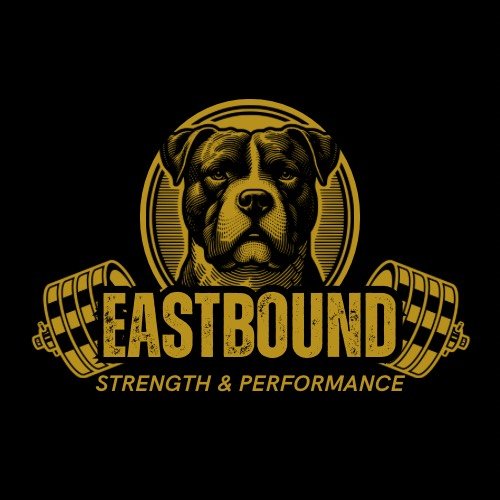The Core of It All: Why True Core Strength Powers Everything You Do
At Eastbound Strength & Performance, we talk a lot about strength — real, usable strength. But if there’s one thing that ties everything together from powerlifting to sprinting to simply living pain-free it’s the core. And no, we’re not talking about endless sit-ups or holding a plank until your shoulders burn. True core strength isn’t about six-pack abs it’s about how your body transfers force, stabilizes under load, and breathes under pressure.
Core Strength in Powerlifting
In powerlifting, your core is your foundation. Every big lift: the squat, bench, and deadlift all rely on how well your trunk can brace and transmit force. A weak core leaks energy.
When a lifter misses a heavy squat or deadlift halfway up, it’s often not the legs or back that fail. It’s the midsection collapsing under tension. That’s why we spend time developing bracing mechanics through heavy compound lifts, isometric holds, and controlled breathing.
We’re training the core to be a stabilizer, not just a mover.
Core Strength in Sports
For athletes, the core is the bridge between upper and lower body power. A strong core allows you to change direction faster, absorb contact safely, and transfer force from your legs to your hands or stick or bat — whatever your sport demands.
That’s why we emphasize anti-rotation and dynamic core work, the kind of movements that teach your body to resist unwanted motion while creating power in the right direction. We use medicine ball throws, band-resisted chops, mace swings, and rotational plyometrics to challenge the core from every angle.
Athletes need to create and control torque. That’s where the real world strength lives.
Core Strength in Everyday Life
Even outside of sports, your core dictates how you move and feel. It’s your posture, your balance, and your ability to breathe properly. If your core can’t stabilize your spine and pelvis, your lower back, hips, and shoulders start to pick up the slack, and that’s when pain creeps in. Developing a strong, coordinated core means better movement patterns, fewer injuries, and more strength in everything you do from lifting your kid to getting out of bed without pain.
Breath Work: The Missing Piece
Most people overlook the most fundamental part of core training… breathing.
Your diaphragm, obliques, and deep abdominal muscles all work together to create intra-abdominal pressure — that’s what stabilizes your spine and lets you move under load. If you’re not breathing correctly, you’re not bracing correctly.
We train our athletes to breathe through the nose, expand the rib cage 360°, and use controlled exhales to build stability. It’s not flashy, but mastering breath work unlocks another level of core strength. It ties the nervous system, posture, and movement together and it’s the difference between being “strong” and being bulletproof.
How We Train the Core at Eastbound
At Eastbound, we train the core like any other muscle group with intention and variety.
Anti-Rotation: Bands, Pallof presses, med ball tosses
Anti-Extension: Ab rollouts, stability ball drags, controlled eccentric work
Dynamic & Plyometric: Rotational throws, landmine twists, mace circuits
Isometric Strength: Heavy carries, static holds, bracing under load
Breath & Control: Diaphragmatic breathing, nasal breathing drills, positional resets
Core training isn’t an afterthought here, it’s a cornerstone. Whether you’re trying to PR your squat, explode off the line, or move pain-free, your core is where it all begins.

